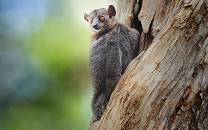
Safari Tours to Kirindy Forest
-
![11-Day Madagascar Family Adventure Tour]()
11-Day Madagascar Family Adventure Tour
$8,299 to $8,699 pp (USD)
Madagascar: Private tour
Mid-range Lodge & ResortYou Visit: Antananarivo (Start), Andasibe-Mantadia NP, Morondava (Town), Kirindy Forest, Anjajavy Reserve, Antananarivo (End)

Wayfairer Travel
4.8/5 – 185 Reviews
-
![19-Day Andasibe - Baobab Alley - Kirindy - Tsingy - Ifaty]()
19-Day Andasibe - Baobab Alley - Kirindy - Tsingy - Ifaty
$3,455 pp (USD)
Madagascar: Private tour
Mid-range Lodge & HotelYou Visit: Antananarivo (Start), Andasibe-Mantadia NP, Antsirabe (City), Morondava (Town), Kirindy Forest, Bemaraha NP, Allee Des Baobabs (Highlight), Ranomafana NP, Isalo NP, Ifaty (Town & Beach), Ivato Airport (Antananarivo), Antananarivo (End)

Soul Of Madagascar Tours
4.9/5 – 35 Reviews
-
![9-Day Discovering the Baobabs and Beyond]()
9-Day Discovering the Baobabs and Beyond
$2,612 pp (USD)
Madagascar: Private tour
Mid-range Camping & LodgeYou Visit: Antananarivo (Start), Antsirabe (City), Miandrivazo (Town), Tsiribihina (Town), Kirindy Forest, Morondava (Town), Antananarivo (End)

Malagasya Travel
4.9/5 – 20 Reviews

 Madagascar Parks
Madagascar Parks










